Last year provided some respite for most commodity markets following a turbulent few years, and 2025 is set to see the trend continue.
Dutch bank ING has predicted a “bearish” outlook for global commodities, with supply and demand balances of key agrifoods remaining relatively stable and prices lowering overall. This will be good news for markets like olive oil and sugar, which are set to finally see prices ease after several years of tightened supply.
But it certainly won’t be the case for all commodities, with coffee and cocoa still suffering the effects of extreme weather and disease.
There is also still a lot of uncertainty, with most experts agreeing that geopolitical risks like a potential trade war between the US and China as well as climate change will continue to pose the biggest threats.
So, what are the factors driving the 2025 outlook for global commodity trading, and what can we expect for prices?
Climate
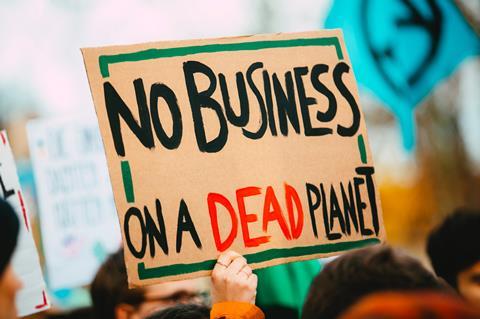
From heavy flooding episodes in the UK, Spain and Morocco, to prolonged drought in other parts of Africa, Asia and the Americas, 2024 solidified the notion that global warming is one of the biggest threats to the global food industry, and it can be expected to continue to wreak havoc among agricultural production.
After a year marked by the weather phenomenon El Niño, which ravaged global agricultural production through a lot of Asia, Australia and South America, the world is now likely heading toward a La Niña event, but one that “looks very short and weak”, according to Rabobank’s 2025 agricommodities outlook report.
Indeed, some of the effects may have already materialised, with experts pointing out that the significant delay in the return of rainfall in Brazil and the dryness in Argentina and the southern part of the US seen in recent months are typical La Niña weather effects.
For now, weather conditions in key production areas like the US, Ukraine, Argentina and Russia have “significantly improved”, Rabobank’s report says, “allowing a slightly better prospect for wheat”.
Read more:
In terms of regulation, the EU’s flagship anti-deforestation law was postponed last year to December 2025. It could also influence prices of affected commodities such as coffee, cocoa, soy and palm oil as traders stock up ahead of the rollout. There was a rush in prices last year ahead of the proposed timeline, and a repeat is likely this year.
On the ESG front, the bloc will implement further due diligence rules in 2026, which “will have an international impact on trade by forcing multinational companies to monitor their supply chains”, the Economist Intelligence Unit (EIU) predicts.
Any other measures adopted at COP30 in November 2025, where governments are due to update their national climate pledges, could also end up influencing commodity prices later in the year.
Geopolitics

Global farmers face “a very uncertain geopolitical outlook”, Rabobank analysts say in its annual commodities report.
While still in the midst of a war with Russia, Ukraine has managed to continue exporting agricommodities including wheat, soy and sunflower oil at a good pace via the Black Sea corridor. But while US president-elect Donald Trump has promised to deliver a peace agreement, unpredictability is a major factor to consider – especially if Russia strikes Ukraine’s ports, which hold much of the country’s wheat stocks.
Other issues such as labour shortages, adverse weather and lower stocks at the start of the current export season are all contributing to lower Ukrainian agriexports forecasts, based on Rabobank estimates.
Continued geopolitical turmoil in the Middle East is expected too, with the crucial route for trading goods along the Red Sea still under Houthi rebel attack and operating at much lower capacity than before the Gaza war.
Yet another geopolitical threat looms in the form of a trade war between the US and China, which could prove devastating for a lot of commodity and consumer goods markets around the globe. Trump has threatened to slap tariffs on imports from China, Mexico and many other countries, which “could result in farmers facing an attack on their margins”, according to Rabobank analysts. The potential trade war could “both create and destroy a lot of value in several countries”, they say, given the US imported $195bn worth of agricultural products in 2023, most notably alcoholic beverages (take French wine and Mexican tequila), fruit and vegetables, sugar, cheeses, vegetable oils, coffee, and cocoa.
Rabobank predicts US tariffs on China will hit used cooking oil imports quite heavily. When China retaliates, US soybeans – the largest agricultural export from America to the country – might be in the line of fire too.

European exporters could benefit as alternative suppliers to the US. For instance, a trade deal between the US and the EU could result in all or most EU soy and soymeal import demand shifting to the US and away from South America. But the headline news is that an all-out tariff war will inevitably be “a major potential headache for global economic trade and growth”, says Shore Capital analyst Clive Black, with significant shifts in international trade expected.
Rabobank experts add: “Given the trade war outlook, farmers’ and food processors’ margins will be under pressure at different points across different countries and commodities.”
Trump’s tariff proposals and industry overcapacity could also “weigh on container shipping demand and profitability in 2025”, Bloomberg Intelligence warns, which could result in higher logistics costs. And there is a precedent – shipping container rates increased by 70% during Trump’s previous term, according to freight intelligence platform Xeneta.
The Red Sea conflict has already resulted in shipping delays and fourfold increases in prices in some cases last year, and traders fear fresh hikes will trickle down to consumers.
Read more:
BI analyst Stephane Kovatchev says: “The rise in container shipping freight rates this year can be largely explained by Houthi rebel attacks on vessels in the Red Sea and the brief dockworker strike on the US East Coast in October.
“This has supported the profitability of container shipping companies such as Maersk and Hapag-Lloyd. A possible re-stocking of inventories in the US, ahead of rising tariffs, could increase demand for shipping services and support industry profitability in the near term.”
The UK can find some solace in the fact it just joined the Comprehensive & Progressive Agreement for Trans-Pacific Partnership (CPTPP), a 12-country trade bloc that includes Malaysia, Mexico and Canada, meaning it will be able to trade certain goods at reduced tariff rates and under quicker border processes.
CPTPP countries are the second-biggest supplier of ingredients to the UK after the EU, with imports from the bloc rising 9.7% so far this year, according to the Food & Drink Federation (FDF). British manufacturers will be able to import commodity-linked products like soy sauce, sesame oil, and cocoa butter tariff-free.
Energy

Finally, commodity traders and food and drink manufacturers will surely be keeping a close eye on the energy markets, which are expected to “come under pressure” this year, says ING Think, the economic analysis branch of the Dutch bank.
Oil will see “fairly modest demand growth once again in 2025”, ING says, and there should be plenty of surplus to cushion the markets. But the EU’s total ban on Russian pipeline natural gas via Ukraine is already predicted to push up gas prices, as Europe looks for more expensive alternatives in the US and the Middle East.
So, while energy prices for consumers are expected to generally fall this year, the days of cheap energy sources seem to be gone, and geopolitical shocks can still play a part as the conflicts in eastern Europe and the Middle East rage on.
As the EIU said in its recent industry outlook report: “Hopes that the world will one day return to normal have been continually dashed since the Covid-19 pandemic, and 2025 will be no different.”
The outlook in 2025 for six key commodities
Sources: ING, Rabobank, Filippo Berio, Defra, AHDB
Coffee

Coffee prices have seen extreme volatility in 2024 due to lower supply.
Arabica beans hit $3.44 (£2.70) a pound in early December, levels not seen since 1977. Prices of cheaper robusta beans broke all-time records at $5,694 per tonne in November.
Tightness in the market due to weather conditions in Brazil and Vietnam means prices “could remain volatile through 2025”, says ING’s Warren Patterson. The bank forecasts average ICE arabica future prices (USc/lb) for the full year 2025 will stay at around 268, peaking earlier in the year and slowly decreasing before increasing again in quarter four.
Cocoa
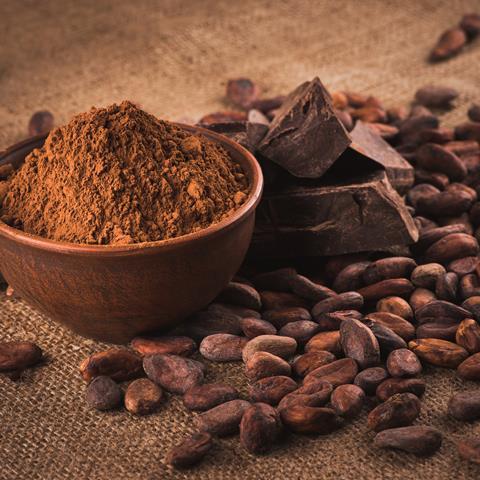
After a 2023/24 season marked by a deficit in cocoa production – which led to the commodity hitting record-high prices through April and May last year – experts predict the market will finally shift to surplus in 2025.
The shortfall of last year was mainly due to unfavourable weather across West Africa, while main producers Ivory Coast and Ghana struggled with disease too. Prospects for the 2024/25 marketing year are “looking better”, ING’s Patterson says, though markets are “still sensitive” and concerns over the weather remain.
ING predicts cocoa prices on the London stock market will stay at £6,000 per tonne in the first quarter of the year and then slowly decrease to £4,400 per tonne in quarter four.
Vegetable oils
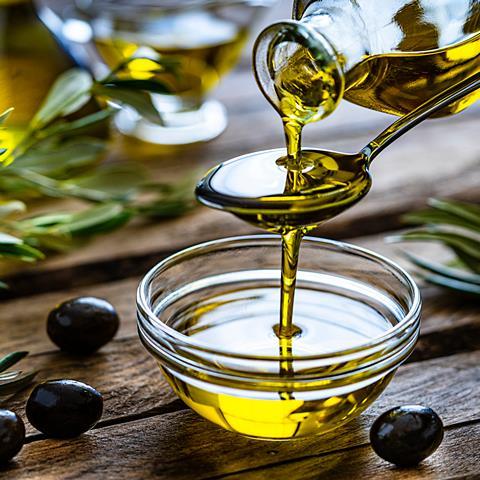
Prices of palm oil, the world’s most-consumed vegetable oil, are expected to increase in 2025 due to higher demand from countries such as India, paired with a deficit in supply because of lower rainfall in southeast Asia, according to Rabobank. Limited availability of global vegetable oil will contribute to the increase, the bank’s experts say.
Meanwhile, much-anticipated deflation in the olive oil markets will be welcomed from the first quarter of 2025, according to Filippo Berio UK MD Walter Zanre, as production in the Mediterranean improves.
Mazen Assaf, founder of high-end brand The Olive Oil Guy, says: “In the coming weeks, olive oil prices will drop from their all-time highs, and retail prices will follow.
“But extra virgin olive oil will no longer be compared in price to vegetable oils. After all, it is a healthy, fresh fruit juice and not a commodified fat.”
Grains
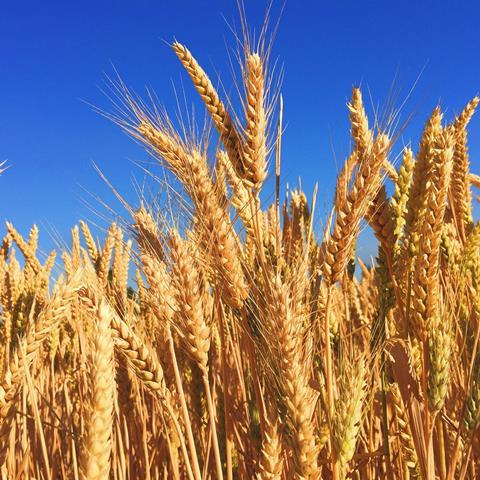
The global soybean market is set to be well supplied through 2025, which should continue to limit prices, according to Rabobank’s senior analyst Lief Chiang. Indeed, the outlook is “somewhat subdued” as prices have been on the decline for many years (they fell 25% last year alone). However, any potential escalation in trade frictions between the US and China – its biggest soybeans export market – could throw markets into disarray.
Global wheat supply is expected to experience some deficit in 2025, as countries like Russia and France are underperforming. This could be offset by the US and Australia increasing output, Rabobank says.
Tightened supply “should mean prices move higher from current levels”, ING’s analysts say. But “wheat could also get caught up in trade tensions with a large share of US production exported to global markets.”
Meat
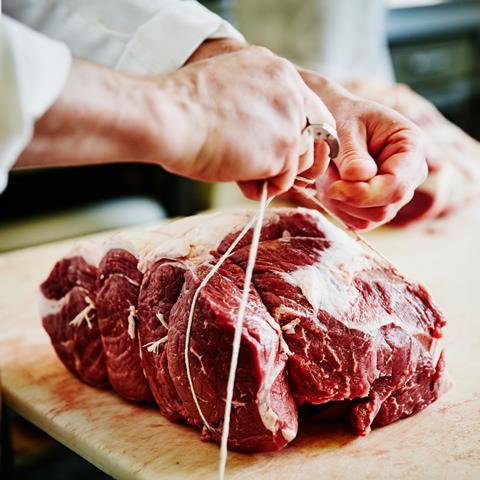
UK consumers may have flocked back to beef and lamb last year, but record high farmgate prices are expected to continue into 2025, driven by a slump in production.
Defra data shows the UK cattle herd declined by 15% year on year in 2024, with the beef breeding herd down 45%. The cut in the female breeding herd was entirely driven by a decline in the beef herd, whilst dairy cow numbers remained flat on the year, according to AHDB. This was the greatest annual reduction seen in the beef breeding cows category in at least 20 years, and points to a continued contraction in suckler-bred cattle supply going forward.
The UK sheep flock, meanwhile, was down 25% last year, while lambs under one year, at June 2024, totalled 15.23 million, a historic low and down 1.5% on a year earlier. The total female breeding flock declined by 3.6% year on year, to stand at 14.88 million.
The decline in breeding females is likely leading to a smaller lamb crop in 2025 – which could ultimately drive prices up further.
Dairy
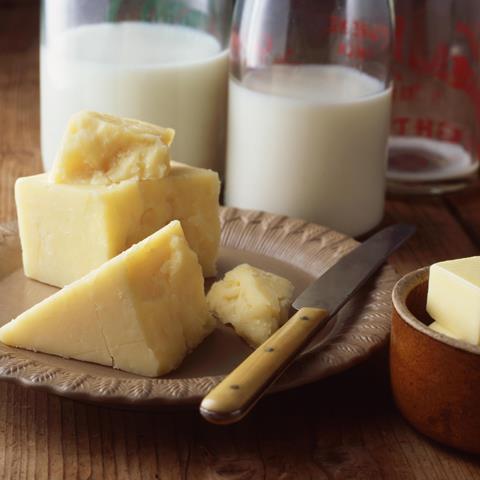
Affordable feed costs and limited major weather disruptions helped global supply turn a corner towards the end of 2024, according to Rabobank, which is predicting production gains of 0.8% globally for 2025 – though this will only slightly offset last year’s 0.6% forecasted increase.
Demand is expected to improve in 2025, and any dairy price deflation from slightly higher production may drive an increase in sales volumes.
But with replacement heifers expensive and in short supply in many regions, many farmers will be deterred from taking advantage of higher margins by increasing production.
In the UK, producer numbers fell slightly last year, but production is expected to reach 12.4bn litres in the 2024/25 milk season, up 0.9% year on year, helped by good grass growth and better conditions on farm.

